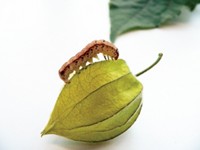Advertisement
Grab your lab coat. Let's get started
Welcome!
Welcome!
Create an account below to get 6 C&EN articles per month, receive newsletters and more - all free.
It seems this is your first time logging in online. Please enter the following information to continue.
As an ACS member you automatically get access to this site. All we need is few more details to create your reading experience.
Not you? Sign in with a different account.
Not you? Sign in with a different account.
ERROR 1
ERROR 1
ERROR 2
ERROR 2
ERROR 2
ERROR 2
ERROR 2
Password and Confirm password must match.
If you have an ACS member number, please enter it here so we can link this account to your membership. (optional)
ERROR 2
ACS values your privacy. By submitting your information, you are gaining access to C&EN and subscribing to our weekly newsletter. We use the information you provide to make your reading experience better, and we will never sell your data to third party members.
Environment
In Cahoots: Fungi, Ants, And Bacteria
Symbiotic system could be a source of potential drug leads and enzymes for biofuel production
by Elizabeth K. Wilson and Amanda Yarnell
April 13, 2009
| A version of this story appeared in
Volume 87, Issue 15
FOR YEARS scientists have been scrutinizing an ancient symbiotic love triangle involving ants, fungi, and bacteria: Tropical leafcutter ants chew leaf beds, which promotes fungal growth and thus helps the fungus. The ants then turn on the symbiotic fungus and eat it. Meanwhile, bacteria that live on the ants produce antibiotics that keep predator fungi from attacking the symbiotic fungus and destroying the ants' food supply.
More than just of ecological interest, this interconnected system is now proving to be a rich source of new chemistry, including antibiotics and enzymes that could break down biomass for biofuels, researchers announced at two recent meetings.
At the ACS national meeting in Salt Lake City last month and in a Nature Chemical Biology paper (DOI: 10.1038/nchembio.159), biological chemistry and molecular pharmacology professor Jon Clardy of Harvard Medical School unveiled his group's structural elucidation of an antifungal compound generated by actinobacteria in the symbiotic system.
Meanwhile, at the Department of Energy's Joint Genome Institute's fourth annual meeting in Walnut Creek, Calif., Cameron R. Currie, a bacteriology professor at the University of Wisconsin, Madison, who collaborated with Clardy on the antifungal compound research, announced a new discovery from a different aspect of his ant research: the finding that the symbiotic fungus appears to be producing cellulase enzymes, which help break down the leaves cut by the ants. But the fungus does this only in its native environment. Attempts to get the fungus to produce cellulase in the lab have failed—a phenomenon that's still a mystery.
The type of cozy relationships with food and protectors enjoyed by the ants is common among other ants and other insects, Currie explains. "Insects in general are not as well designed to produce novel molecules," he said. But over millions of years of evolution, they've adapted to other organisms that do it for them.
Dentigerumycin, a compound produced by actinobacteria that live with leaf cutter ants, keeps invading fungi at bay.

Dentigerumycin, a compound produced by actinobacteria that live with leaf cutter ants, keeps invading fungi at bay.
Currie and Clardy also discovered that a very similar system involves pine beetles and bacteria that produce mycangimycin, a polyunsaturated peroxide, to thwart invading fungi (C&EN, Oct. 6, 2008, page 47). Other examples include the black and yellow mud dauber wasp, which is known to carry six strains of bacteria that produce protective compounds.
The extent of the ants' elaborate relationship came to light about 10 years ago, when Currie discovered the ants' bacterial benefactors, and then several years ago, Currie reported that ants have evolved special containers on their exoskeletons, called "crypts," in which they cultivate protective bacteria.

The newly characterized antibiotic, which Clardy and Currie call dentigerumycin, is a depsipeptide containing unusual amino acids, such as piperazic acid and N-hydroxyalanine, as well as a polyketide-derived side chain containing a pyran ring.
The compound could be a potential starting point for new compounds that kill fast-growing cells, such as cancer cells.
Currie's team has recently begun to use what they've learned about the symbiotic system to address the current interest in finding ways to convert biomass into fuels. For example, compounds from the ant-fungus-bacteria system might prove useful for breaking down plants' tough, fibrous cellulose.
Because each fungus-feeding ant species has evolved its own special system, there's still much chemistry to unravel, Clardy says. "Different ant species have different fungus gardens, different pathogens, and different mutualistic bacteria."
Adds Thomas Eisner, an emeritus chemical ecology professor at Cornell University, "There's no limit to the complexitiy of interaction in nature. If humans can think of a scheme, the chances are nature's already implemented it."
Ants covered with mutualistic bacteria work away in their fungus garden.





Join the conversation
Contact the reporter
Submit a Letter to the Editor for publication
Engage with us on Twitter